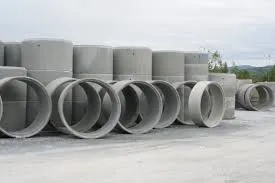Dec . 01, 2024 02:59 Back to list
casting machinery parts
Casting machinery parts play a crucial role in the manufacturing industry, serving as foundational components in various machines and equipment. This process involves pouring molten material, usually metal, into a mold to create parts with desired shapes and specifications. The effectiveness of casting processes significantly influences the overall efficiency and performance of machinery.
One of the primary advantages of casting is its ability to produce complex shapes that would be difficult or impossible to achieve through other manufacturing methods, such as machining or forging. This complexity allows for greater design flexibility, enabling engineers to create intricate parts that meet specific functional requirements. Additionally, casting is often more cost-effective for producing large quantities of parts, as it minimizes waste and can reduce the need for secondary operations.
There are several types of casting methods employed in the production of machinery parts, including sand casting, investment casting, and die casting. Sand casting is one of the most commonly used techniques, where sand is utilized to create molds. This method is highly versatile and suitable for producing small to large parts. Investment casting, also known as lost-wax casting, offers high precision and is ideal for creating intricate components with smooth surfaces. Die casting, on the other hand, involves forcing molten metal into a mold under high pressure, making it suitable for high-volume production of smaller parts.
casting machinery parts

One of the critical considerations in casting machinery parts is the selection of materials. Metals such as aluminum, iron, and steel are commonly used due to their favorable mechanical properties and ability to withstand high temperatures. The choice of alloy and the casting process can significantly affect the final product's strength, durability, and performance characteristics.
Quality control is another vital aspect of casting machinery parts. Implementing stringent testing procedures ensures that the produced components meet industry standards and specifications. Techniques such as X-ray inspection, ultrasonic testing, and dimensional measurement help detect any defects and ensure that the parts will perform reliably in their intended applications.
In conclusion, casting machinery parts is an essential process that enables the production of complex and high-quality components used in various industries. As technology advances, innovations in casting techniques and materials continue to improve the efficiency and capabilities of machinery manufacturing, paving the way for enhanced productivity and performance in the manufacturing sector.
-
Durable Centrifugally Cast Iron Water Main Pipe
NewsAug.11,2025
-
Centrifugally Cast Iron Water Main Pipes for Reliability
NewsAug.10,2025
-
High-Quality Centrifugally Cast Iron Water Main Pipes
NewsAug.09,2025
-
Durable Cast Iron Water Main Pipe & Drainage Solutions
NewsAug.08,2025
-
Buy Cast Iron Pipe: Premium Ductile Iron & Drain Solutions
NewsAug.07,2025
-
Durable Cast Iron Water Main Pipe | Buy Ductile Pipe
NewsAug.06,2025


